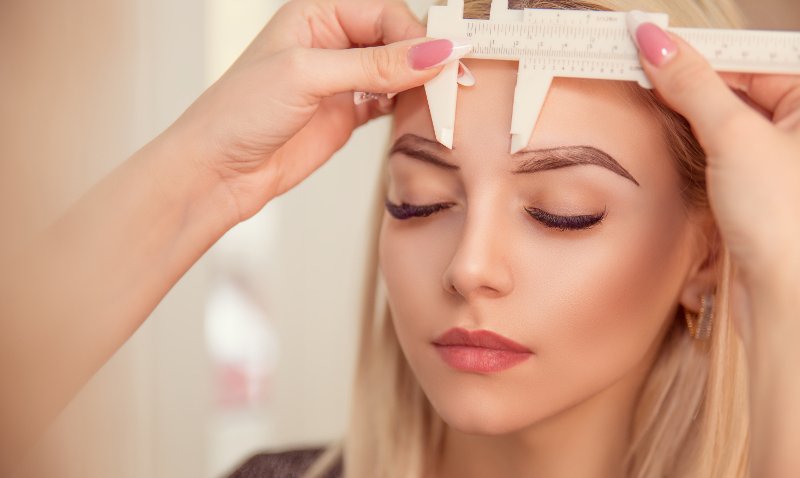
One in-demand and potentially very lucrative service some salon owners have been adding to their salons in recent years is microblading. It is lucrative because practitioners providing microblading services charge between $500 and $2000 for one to two sessions. These sessions typically consist of a first “main” session where the majority of the microblading work is done and a second “touch-up” session where any areas that did not take to the cosmetic ink are redone.
So what is microblading? Microblading is the cosmetic placement of semi-permanent ink under the skin, usually in the eyebrow area, with the intention of creating the appearance of natural hair. Many women (and some men with universal hair loss conditions) see microblading as a good alternative to putting makeup on every day in order to give the appearance of thicker, fuller brows. For those clients with universal hair loss conditions such as certain forms of alopecia, microblading is used to replace lost eyebrows.
Many people erroneously call microblading “cosmetic tattooing” but this is not exactly correct. For one thing, while microblading does use a device akin to a tattoo gun to place a special ink below the surface of the skin, the needle is actually much smaller than that of an ordinary tattoo gun. Also, the results of microblading are only semi-permanent unlike tattoos.
Legalities Of Microblading
Unlike many salon services, certified aestheticians are generally not automatically eligible to legally provide microblading services without first completing certain prerequisites. Although this differs from state to state and there are no national guidelines for what officially makes one eligible to provide microblading services, common state requirements include passing a blood-borne pathogens exam which is similar to what a tattoo artist would need in order to perform their services. There are also some educational bodies such as the American Academy of Micropigmentation which provide certifications; however, these certifications are not a legal requirement and are generally obtained as a way to lend credentials to the microblading artist. Finally, to ensure that you are fully legally compliant, if you intend to provide microblading services, it is best to thoroughly research all of your state’s requirements.
Microshading
Sometimes considered a subset of microblading and sometimes considered its own art form, microshading is the process of putting semi-permanent ink dots below the top layer of the skin in order to create a “powdered” eyebrow look. While the same tools and ink are used in microshading as are used in microblading, the key difference here is that, instead of using longer strokes to create the appearance of hair like in microblading, only small dots/specs are used in microshading. The same legal requirements that pertain to microblading also pertain to microshading and many practitioners practice both forms of micropigmentation since being state-certified for one of these practices means you are certified for both.
Perfecting Your Microblading Abilities
Although microblading (and microshading) is not permanent because the ink in these procedures will eventually be metabolized by the skin since it is not placed as deeply below the skin as with a tattoo, the results are semi-permanent (6 to 12 months). Obviously, you don’t want your salon to become known as the salon that ruined some poor woman’s (or man’s) eyebrow area for a year. Therefore, if you plan on providing this service at your salon, it is crucial that you are highly competent before offering the procedure to clients. Many practitioners take classes from qualified microbladers and then practice on mannequins before microblading clients at their salon.
Conclusion
Microblading (and microshading) is a lucrative and increasingly in-demand service that not all salons or beauty spas offer. Because of this, it potentially has less competition than many other beauty services and could prove to be a very good source of revenue. However, the service is slightly more complicated than other services since most states have body-art certification requirements which apply to microblading. Therefore, becoming legally certified to perform microblading may be time-consuming and require some monetary investment as well but the returns could greatly outweigh the investment.